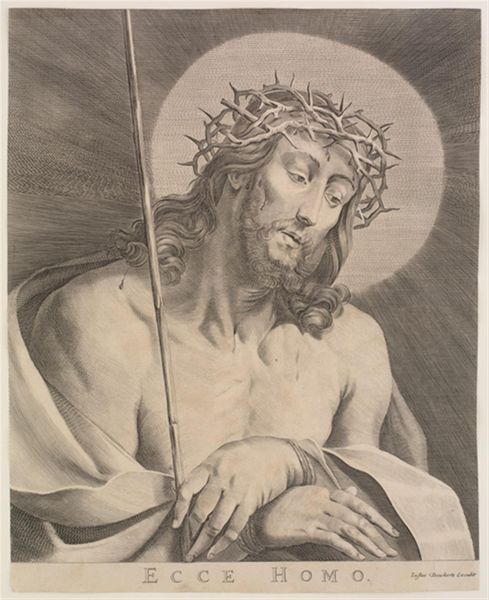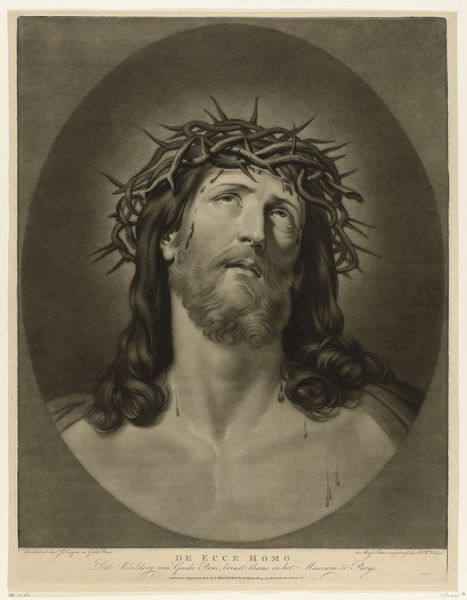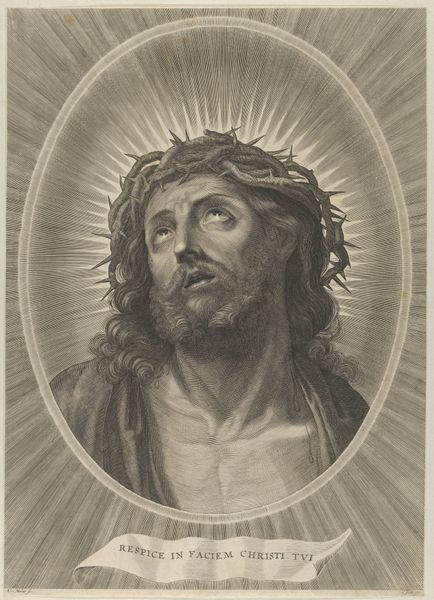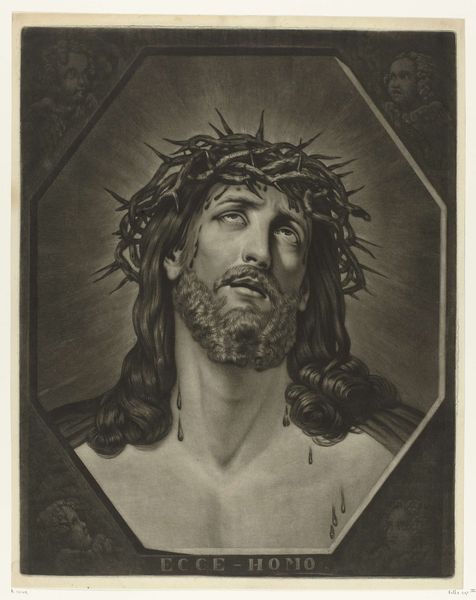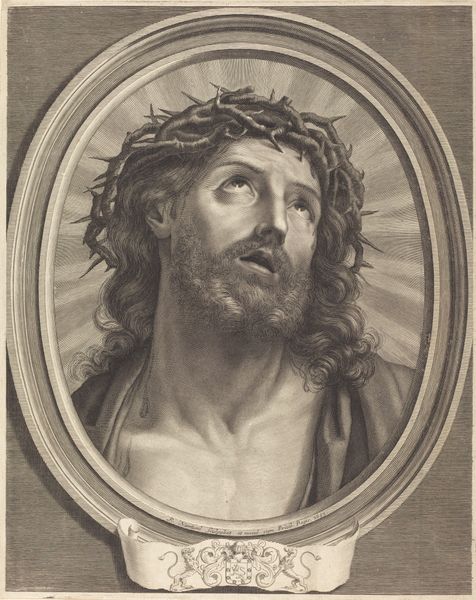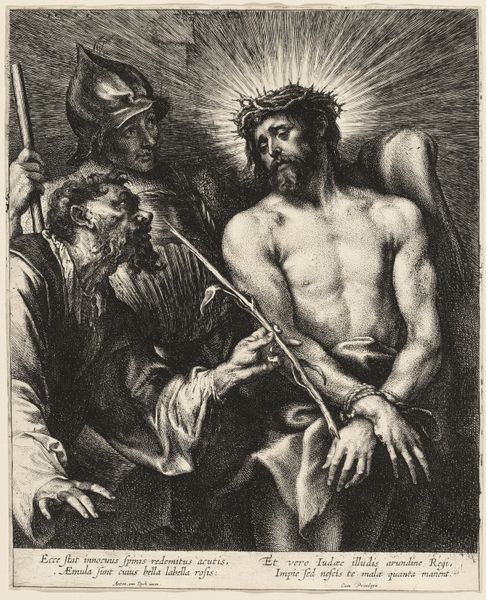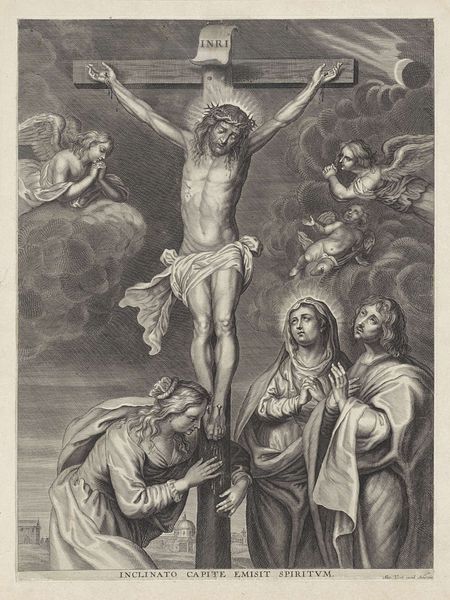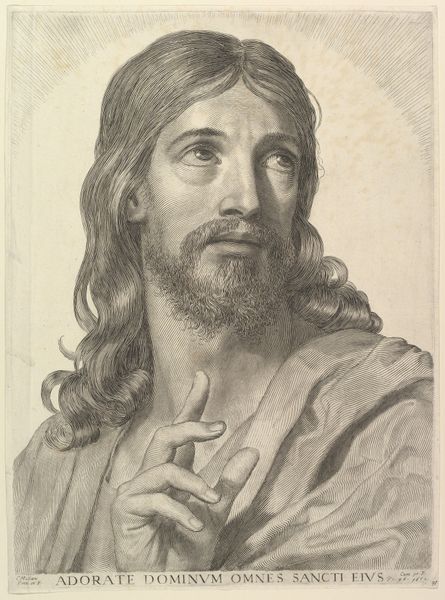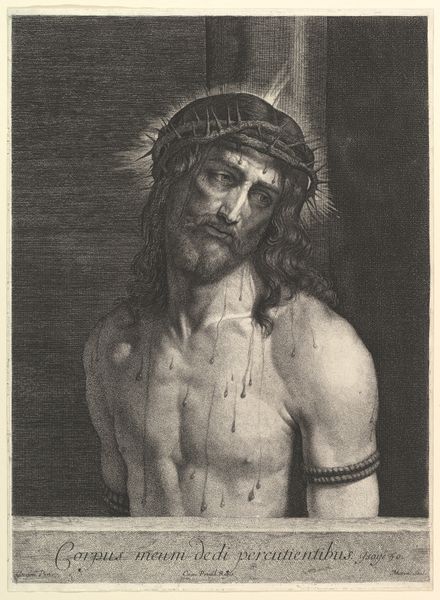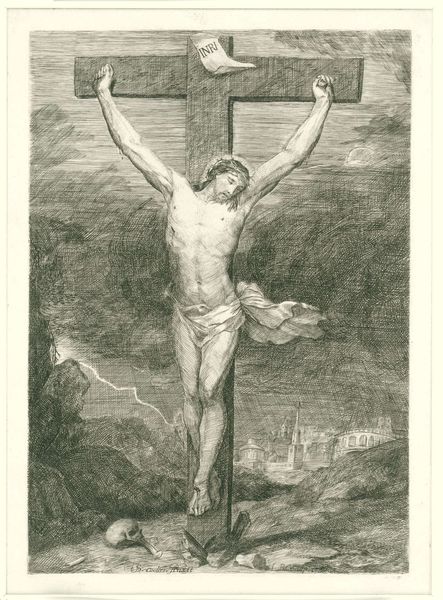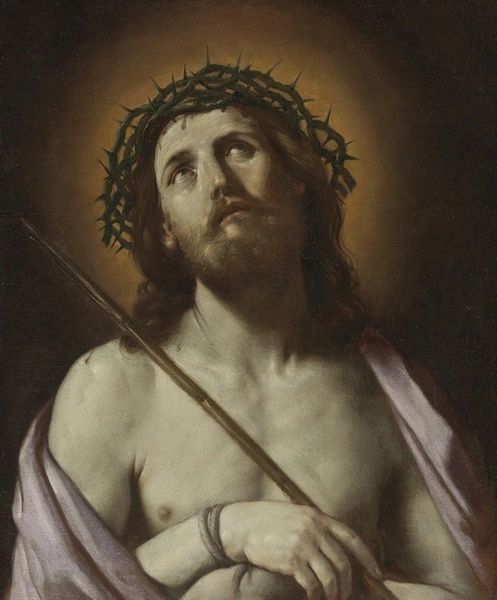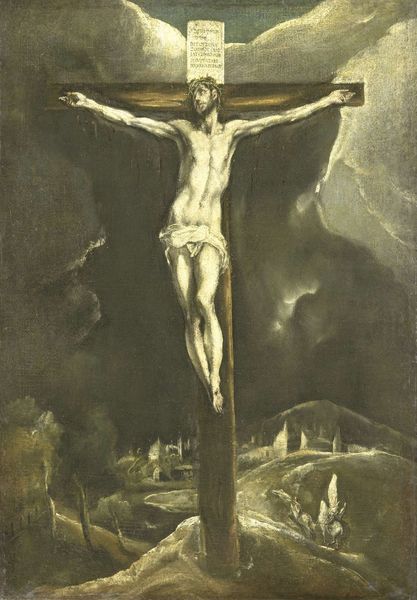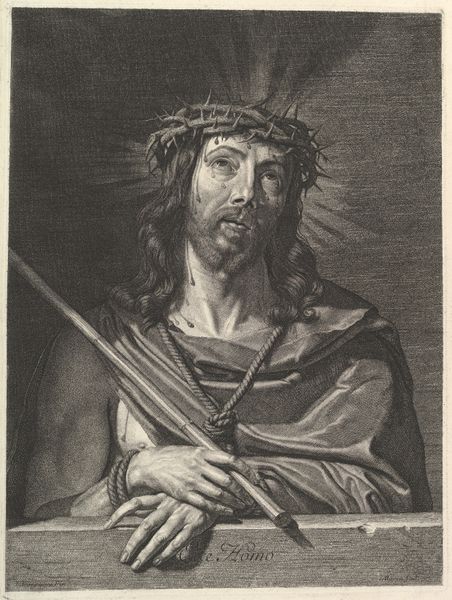
print, engraving
#
portrait
#
baroque
# print
#
figuration
#
chiaroscuro
#
line
#
history-painting
#
engraving
Dimensions: height 189 mm, width 146 mm
Copyright: Rijks Museum: Open Domain
Curator: There's a striking emotional weight in this 17th-century engraving. The profound sadness captured in Christ’s bowed head, his downcast gaze, feels overwhelmingly present even centuries later. Editor: It is interesting how Bloemaert’s composition isolates Christ within a darkened space, almost completely surrounded by dense hatching. What significance does that level of isolation hold in light of the systemic violence carried out against oppressed people throughout history? Curator: This print, made between 1622 and 1630, titled "Christ Carrying the Cross", is a compelling demonstration of Baroque chiaroscuro. Note the artist’s sensitive handling of light and shadow as well as his focus on figuration and the expressiveness of line. It is housed here at the Rijksmuseum. Editor: I notice the heavy reliance on symbolic weight carried through elements like the crown of thorns or the burden of the cross. This connects not only to Christian mythology, but broader ideas of martyrdom. It feels potent because of the way suffering becomes entwined with claims to moral or spiritual authority. It forces us to ask, who benefits from the spectacle of pain, and whose voices are being elevated? Curator: The symbols are intentionally arranged to emphasize suffering and redemption within the visual language familiar to its viewers. The light illuminating Christ’s face acts as a beacon. His downcast expression, rather than reading as defeat, suggests humility and sacrifice. It visually embodies the theological concept of bearing worldly suffering. Editor: It seems impossible to divorce depictions like these from their cultural and historical impacts, not only shaping understandings of piety, but solidifying and weaponizing faith-based systems of oppression. Whose suffering is validated, versus erased, and how does this continue to manifest in the power structures around us? Curator: Bloemaert captures a potent image: sorrow and serenity mingle to express something transcendent and timeless. Editor: An image intended, no doubt, to be timeless... But to engage ethically with images like these is to question how legacies of power operate to affect vulnerable populations still.
Comments
No comments
Be the first to comment and join the conversation on the ultimate creative platform.
